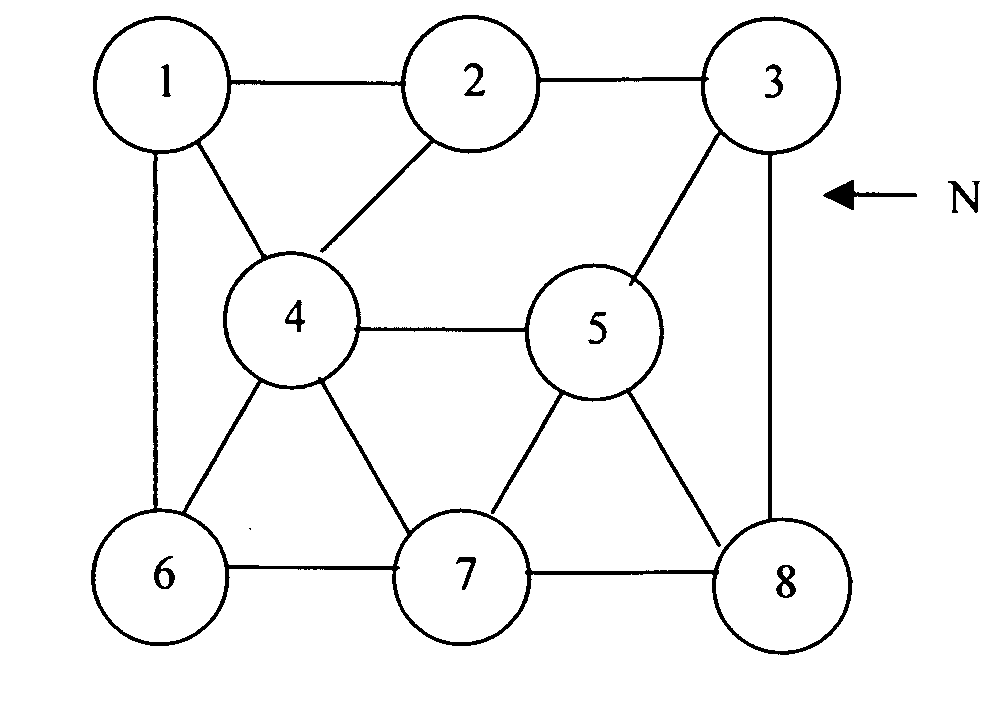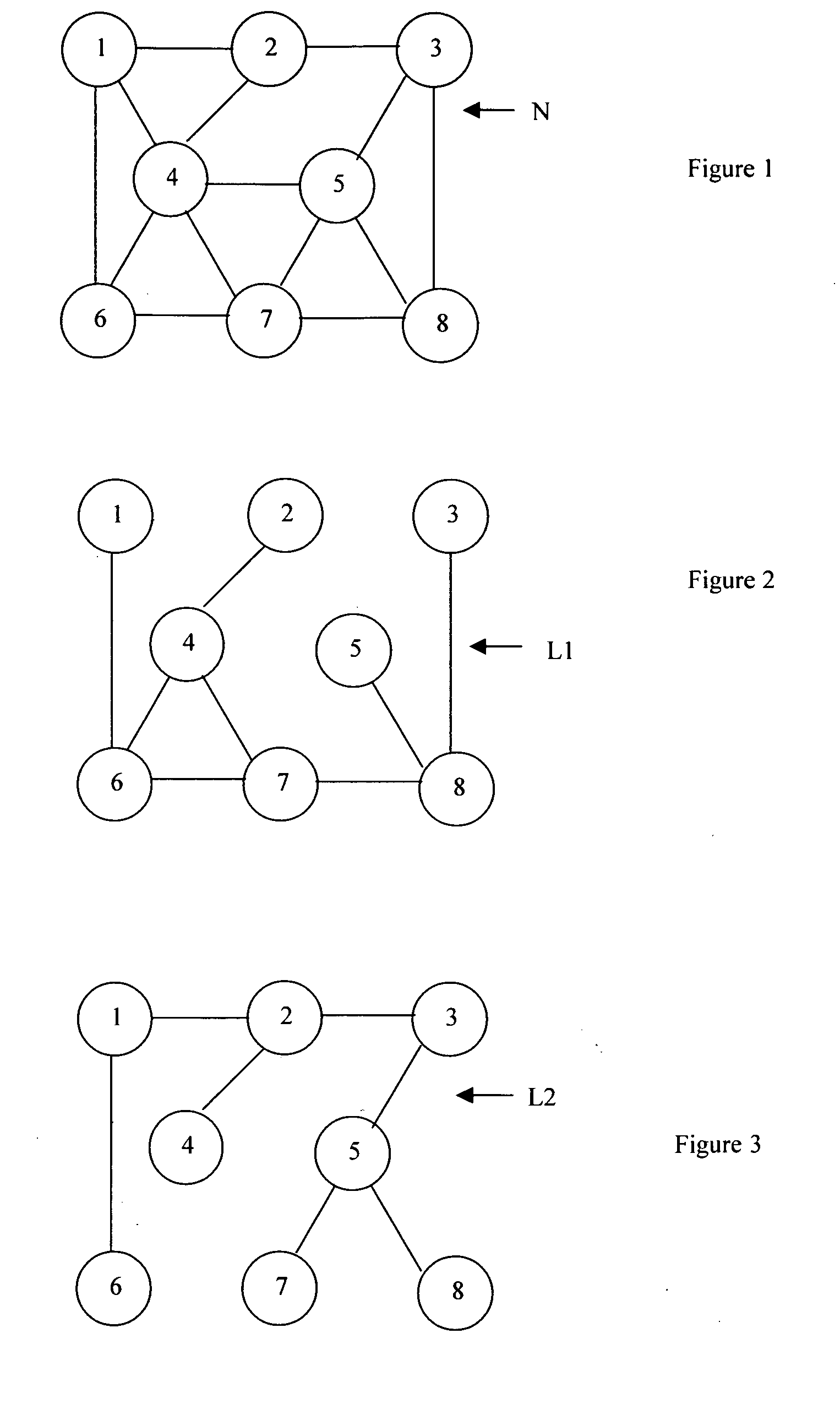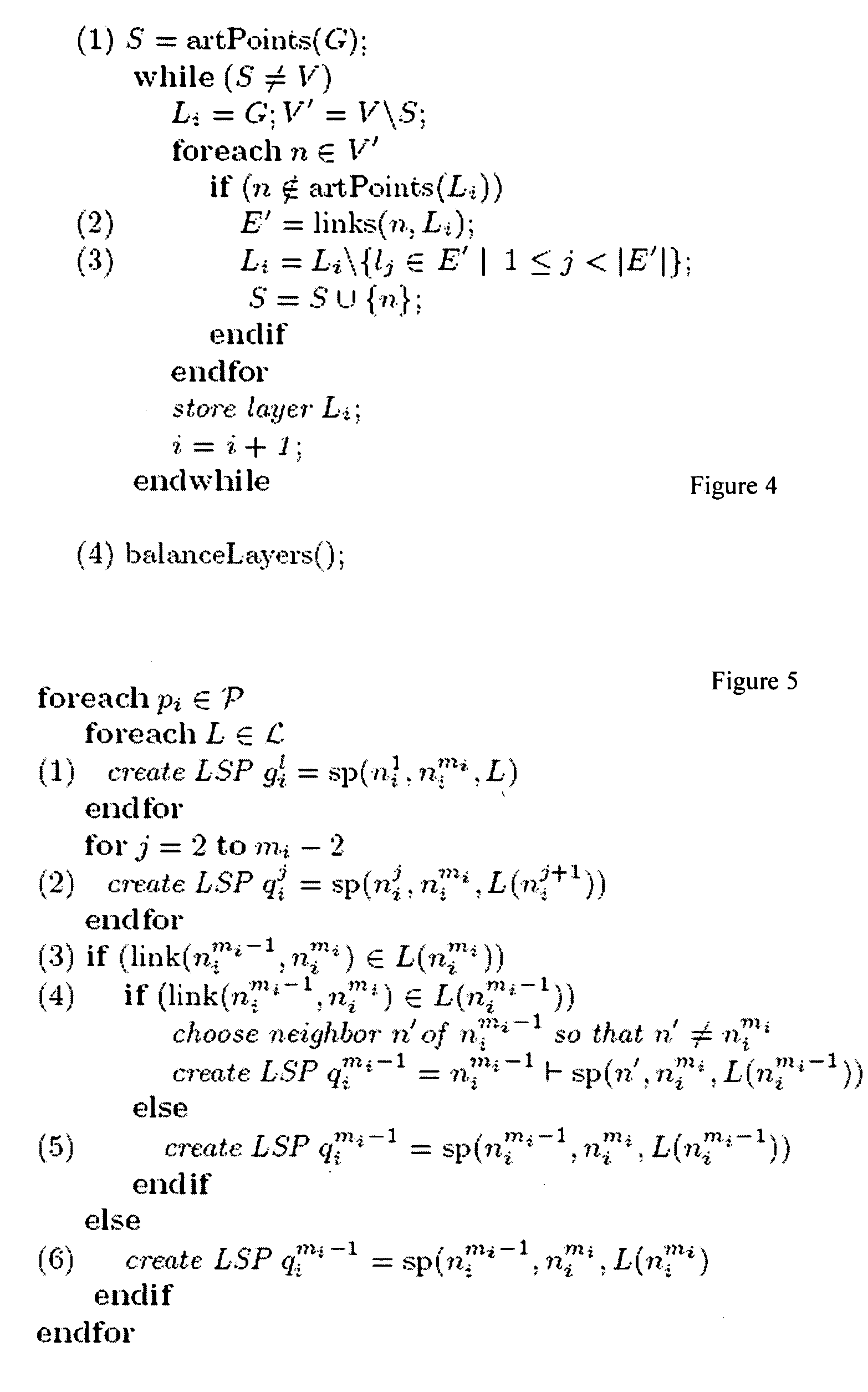Resilient routing systems and methods
- Summary
- Abstract
- Description
- Claims
- Application Information
AI Technical Summary
Benefits of technology
Problems solved by technology
Method used
Image
Examples
Embodiment Construction
[0058] Some embodiments of the invention will now be described by way of example and with reference to the accompanying drawings, in which:
[0059]FIG. 1 is a basic network topology;
[0060]FIG. 2 is a first backup layer;
[0061]FIG. 3 is a second backup layer;
[0062]FIG. 4 shows a first algorithm;
[0063]FIG. 5 shows a second algorithm;
[0064]FIG. 6 shows a network configuration with an isolated node;
[0065]FIG. 7 shows a network configuration with an isolated node and a disabled link;
[0066]FIG. 8 shows a network configuration with a number of isolated nodes and inhibited or disabled links;
[0067]FIG. 9 shows a further embodiment of an algorithm;
[0068]FIG. 10 shows a notation table; and
[0069]FIG. 11 shows a flow diagram in implementation of the invention.
[0070] The first embodiment is referred to as “Resilient Routing Layers” (RRL) and is based on calculating redundant subsets of the network topology that are called layers. Each layer contains all nodes but only a subset of the link...
PUM
 Login to View More
Login to View More Abstract
Description
Claims
Application Information
 Login to View More
Login to View More - R&D
- Intellectual Property
- Life Sciences
- Materials
- Tech Scout
- Unparalleled Data Quality
- Higher Quality Content
- 60% Fewer Hallucinations
Browse by: Latest US Patents, China's latest patents, Technical Efficacy Thesaurus, Application Domain, Technology Topic, Popular Technical Reports.
© 2025 PatSnap. All rights reserved.Legal|Privacy policy|Modern Slavery Act Transparency Statement|Sitemap|About US| Contact US: help@patsnap.com



